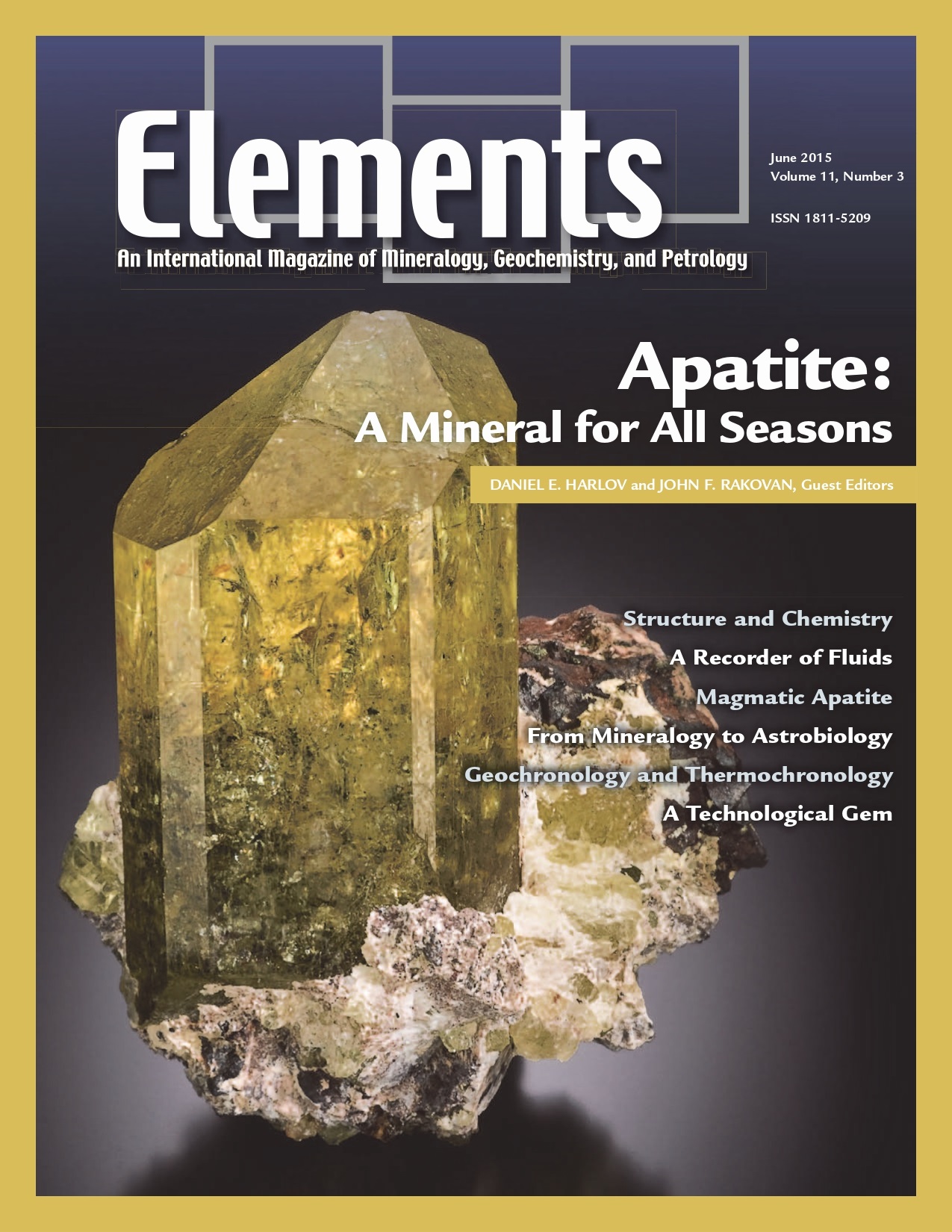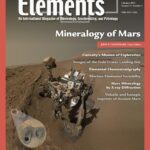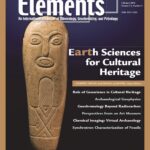Apatite: A Mineral For All Seasons, June 2015, Vol. 11, No. 3
$20.00
At the intersection of the biological, geological, and materials science realms, the topic of apatite is highly diverse and interdisciplinary. Apatite-group minerals are the dominant phosphates in the geosphere and biosphere.
Apatite: A Mineral For All Seasons
June 2015, Vol. 11, No. 3
At the intersection of the biological, geological, and materials science realms, the topic of apatite is highly diverse and interdisciplinary. Apatite-group minerals are the dominant phosphates in the geosphere and biosphere. They are found in virtually all rock types as the principal sink for phosphorus and fluorine, and in many cases yttrium and the rare earth elements. They form the major mineral component in vertebrate bones and are the base of the global phosphorus cycle. The isotope chemistry of U, Th, and Pb in apatite has led to their broad application in geochronology. Last, the physical and chemical properties of apatite group minerals make them ideal for many technological applications, including phosphors, lasers, prosthetics, ceramics, metal sequestration agents, and potential solid nuclear waste forms. This issue of Elements presents cutting-edge research on apatite with regard to (1) geochemical investigations on crustal and mantle processes on Earth, (2) biological processes, (3) practical applications in industry, and (4) geochemical processes in extraterrestrial environments.
Why You’ll Love Elements Magazine:
- Expert Contributors: Articles written by renowned researchers in the field of geoscience.
- Engaging Content: Join a community of readers who are passionate about Elements.
- Exceptional Quality: Each issue is printed on high-quality paper with stunning visuals and detailed illustrations that bring complex scientific concepts to life.
Order your copy of the June 2015 issue of Elements magazine today and discover apatite: a mineral for all seasons.
Related products
-
Early Earth, August 2006, Vol. 2, No. 4
$20.00The earliest Earth was a strange inhospitable world, yet transitions occurred culminating in the evolution of life within the first billion years. The preservation of a sparse and ambiguous rock record has encouraged debate.
-
Glasses And Melts: Linking Geochemistry And Materials Science, October 2006, Vol. 2, No. 5
$20.00Geological interest in studying melts stems from early recognition that melts play a fundamental role in determining the physical and chemical behaviour of magmas and magmatic processes. However, due to the inherent difficulties associated with working at high temperatures, much of the geological research over the last 30 years has used quenched melts or glasses as proxies for melts themselves.
-
On The Cutting Edge: Teaching Mineralogy, Petrology, And Geochemistry, April 2007, Vol. 3, No. 2
$20.00New advances in research on learning have important implications for teaching mineralogy, petrology, and geochemistry. Effective instructional practices are increasingly student centered, address diverse student learning styles, and employ a variety of active-learning strategies.






